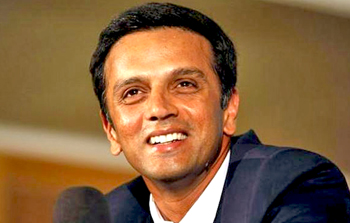New Delhi, Jan 17: Former India captain Rahul Dravid is expecting next month's cricket World Cup to be an aggressive affair as he feels the revamped ODI rules will push teams into selecting attacking bowlers over part-timers.
Speaking to 'ESPNCricinfo', Dravid said new rules, which mandate five fielders inside the 30-yard circle at all times in an innings, will have a huge impact on how the teams work out their strategies at the showpiece event starting February 14.
"With the two new balls, the fast bowlers will get that level of assistance up front. The grounds are bigger too so it won't be that easy to clear the ropes. I think it will be a challenge for the captains. For example, when you have five fielders in the ring, it's very hard to play a part-time bowler," Dravid said.
"You are almost being forced to play five specialist bowlers. That is a real positive. You are going to be forced to attack and look for wickets rather than see part-timers bowl for a large period of play," he said.
Only two fielders are allowed outside the circle for the first 10 overs. Just three fielders are mandated to be outside the circle during the five Powerplay overs to be taken by the batting team before the 40th over.
Former South African captain Graeme Smith said the new rules will make proceedings very exciting.
"If teams get partnerships in these conditions with the five in the ring, the Powerplay at the back-end, that's when they are really going to get the opportunity to score big runs," Smith said.
"You are always looking at your attack and saying we can't afford to carry two part-timers, we need an extra wicket-taker here. If you don't pick up wickets through your bowling session, you will be chasing a big total," he explained.
Dravid said spinners will have a huge role to play in the tournament despite Australia and New Zealand's reputation of having seamer-friendly tracks.
"Those are the grounds we are going to be playing the World Cup in. They have been really slow and the spinners have come into play. You are just going to have to balance it out. There might be places where you go and say, the spinner might not have such a big impact on that particular day," Dravid said.
"It's a long tournament, it's in their summer, the nature of the wickets might change, you are just going to have to be smart enough and hopefully have the balance to play different conditions and different kinds of attacks."






Comments
Add new comment